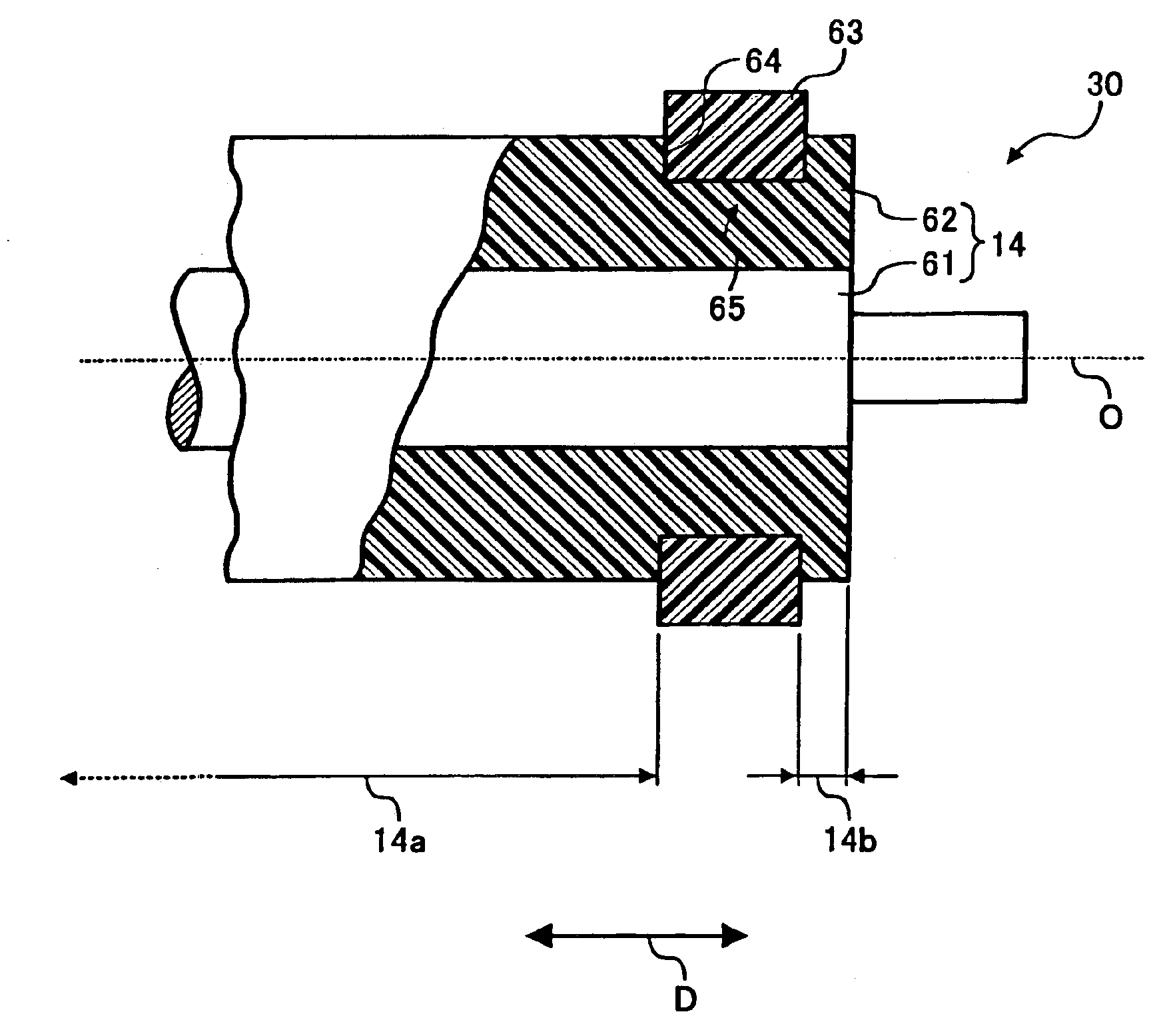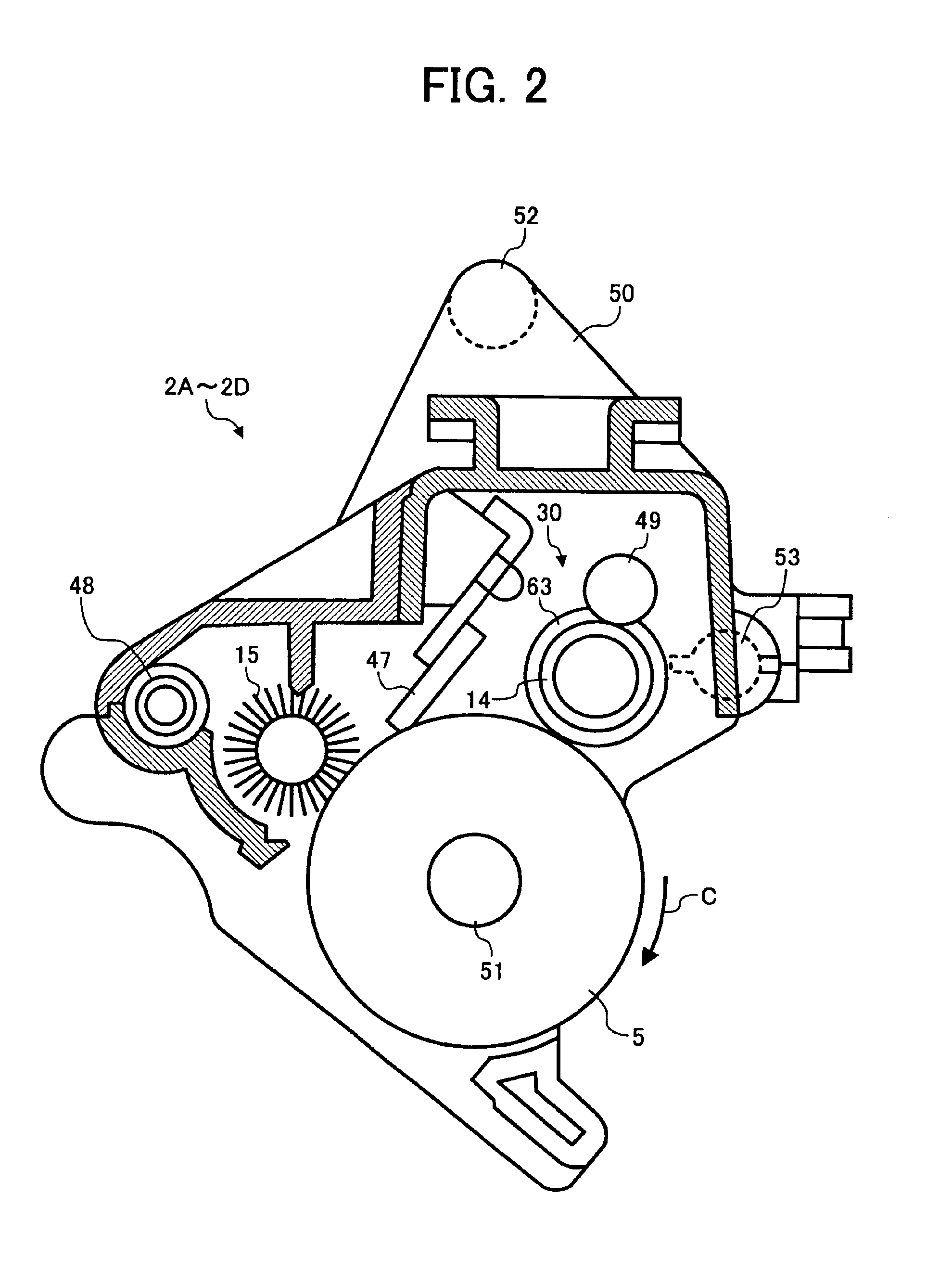Charging device using a charge roller and image forming apparatus including the same
a charging device and charge roller technology, applied in the direction of electrographic process apparatus, instruments, corona discharge, etc., can solve the problems of film peeling at seams in circumferential direction, increasing attention for the contact type of charging device, and reducing the life of the charging devi
- Summary
- Abstract
- Description
- Claims
- Application Information
AI Technical Summary
Benefits of technology
Problems solved by technology
Method used
Image
Examples
first embodiment
[0047]Referring to FIG. 1 of the drawings, an image forming apparatus embodying the present invention is shown and implemented as a tandem full-color printer by way of example. The full-color printer may, of course, be replaced with a monochromatic printer or any one of a copier, a facsimile apparatus and other conventional image forming apparatus. As shown, the printer, generally 100, includes a printer body 1 accommodating four removable drum units or image carrier units 2A, 2B, 2C and 2D. An image transferring unit is located at substantially the center of the printer body 1 and includes an image transfer belt 3 passed over a plurality of rollers including an adhesion roller 58. The image transfer belt (simply belt hereinafter) 3 is movable in a direction indicated by an arrow A in FIG. 1. Four image transfer brushes 57 are disposed in the loop of the belt 3 and respectively face four drums 5, which are accommodated in the drum units 2A through 2D.
[0048]In the illustrative embodi...
example 1
[0101]The charge roller 14 was produced by the following procedure. The core 61 was formed of stainless steel and provided with a diameter of 8 mm. To form the resin layer 62, 60 pts.wt. of ion-conductive agent was added to 100 pts.wt. of ABS resin to prepare a resin component having volumetric resistivity of 106 Ω·cm. Injection molding was effected with the above resin component to form the resin layer 62 on the core 61. Subsequently, the surface of the resin layer 62 was machined to provide the charge roller 14 with a diameter of 12 mm. At this instant, the stepped portions 64 were formed in opposite end portions of the resin layer 62 to thereby form the annular grooves 65 having width of 8 mm each. Subsequently, a 150 μm thick PFA tube was cut to produce two 8 mm wide, gap forming members 63. The two gap forming members 63 each were fitted in one of the annular grooves 65 and caused to shrink by being heated for 20 minutes in a 120° C. atmosphere. When the charge roller 14 thus p...
second embodiment
[0119]A second embodiment of the image forming apparatus will be described with reference to FIG. 5 hereinafter. This embodiment is substantially identical with the first embodiment shown in FIGS. 1 and 2 as to the construction and operation. The following description will concentrate on differences between the first and second embodiments.
[0120]FIG. 5 shows in a section the charge roller 14 and gap forming member 63 included in the illustrative embodiment. As shown, the gap forming member 63, stepped portion 64 and annular groove 65 differ in configuration from the corresponding constituents shown in FIG. 3. As for the rest of the configuration, the illustrative embodiment is identical with the first embodiment. Of course, reference numerals shown in FIG. 5 correspond to the reference numerals shown in FIG. 3.
[0121]When the gap forming member 63 is implemented as thermally shrinkable tube that must be highly durable, durability can be insured if the tube is sufficiently thick, as s...
PUM
 Login to View More
Login to View More Abstract
Description
Claims
Application Information
 Login to View More
Login to View More - R&D
- Intellectual Property
- Life Sciences
- Materials
- Tech Scout
- Unparalleled Data Quality
- Higher Quality Content
- 60% Fewer Hallucinations
Browse by: Latest US Patents, China's latest patents, Technical Efficacy Thesaurus, Application Domain, Technology Topic, Popular Technical Reports.
© 2025 PatSnap. All rights reserved.Legal|Privacy policy|Modern Slavery Act Transparency Statement|Sitemap|About US| Contact US: help@patsnap.com



